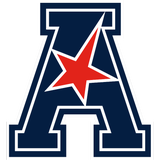
Getting by with less: Gap grows between FBS haves, have nots
Pete Lembo has seen both sides of major college football as the head coach at Ball State and now as an assistant at Maryland.
At Ball State in the Mid-American Conference, a simple decision like buying black helmets for the team came with concessions. There was give and take on every decision.
''And I would share that openly with our team,'' Lembo said. ''I would say, `Look guys, this is life. You're going to have to make these same kind of decisions when you're a husband and when you're a father and you're going to have to work with your wife on these kind of things.'''
At Maryland in the Big Ten, life is easier, relatively speaking. Boosted by a share of the Big Ten's billion-dollar television deals, Maryland brought in $94 million in athletic revenue in 2015-16, according to the figures compiled by USA Today - $70 million more than Ball State.
Media rights deals and the College Football Playoff have increased revenue at all levels of the Football Bowl Subdivision, but the gap has grown between the Group of Five leagues and the Power Five conferences - the SEC, ACC, Big Ten, Big 12 and Pac-12. Over the next month, Group of Five teams will mostly play in third-tier bowl games in front of sparse crowds, earning payouts that mostly cover travel expenses. The Power Five teams get the glamor bowls with the multimillion-dollar payouts.
It is not quite haves and have-nots, but the differences show in the most practical ways.
Bigger staffs allow coaches more time to actually coach. Players not only have access to better facilities for training, but their health and performance is more thoroughly monitored from practice to training table. They also get more academic supervision and support.
''There's a big difference between a need and a want,'' said Joe Parker, the athletic director at Colorado State, which recently opened a new $220 million on-campus football stadium. ''I think we fulfill every need that I've seen on our campus as it relates to intercollegiate athletes. The list of wants is extensive and there's probably not a budget to address every one of them. That's the space we live in, making those tough decisions and prioritizing them. Not convincing ourselves that this thing that might look and seem nice is a necessity when it really isn't it.''
Colorado State's athletic revenue was just under $40 million, which ranks in the top half of the Mountain West but is still $18 million less than Washington State, which ranked last among the Power Five's public schools.
Twenty-eight Power Five schools reported athletic revenue of more than $100 million, with Texas A&M leading the way at nearly $195 million. Each of the Power Five conferences made payouts to their members ranging between from $42 million in the Southeastern Conference to about $29 million in the Pac-12.
The College Football Playoff distributed at least $60 million to each Power Five conference last season , with the Big Ten netting $70.9 million. The Group of Five payouts ranged from the MAC at $21.9 million to Conference USA at $13.9 million.
Not all Group of Five conferences are created equal, but even the most lucrative - the American Athletic Conference - is paying its members about 10 times less than what most Power Five leagues share with their schools.
Lembo coached at Ball State from 2011-15, going 33-29 (23-17 in the MAC). After a 3-9 season in 2015 that made his future at the school uncertain, he left to become assistant head coach and special teams coordinator for head coach DJ Durkin at Maryland. Lembo made about $515,000 in his final season with the Cardinals, and made $350,000 last year at Maryland, which is about $60,000 less than what several MAC head coaches make.
At Colorado State, Parker paid head coach Mike Bobo $1.55 million last year, about $100,000 less than Kansas coach David Beaty, who was the lowest-paid coach in Power Five.
Parker and many ADs in his position try to downplay the differences in revenue, and to some extent they have a point. Ohio from the MAC beat Kansas this season. Northern Illinois, another MAC school, beat Nebraska from the Big Ten. Memphis from the AAC beat UCLA from the Pac-12.
''I think a lot of emphasis is placed on budget size. Maybe too much,'' said Parker, who has previously worked in athletic administration at Texas Tech, Michigan, Oklahoma, Washington State and Texas. ''In what I've seen when people line up to compete, the size of your budget doesn't have much meaning at that moment.''
---
More AP college football: http://collegefootball.ap.org and http://www.twitter.com/AP-Top25
